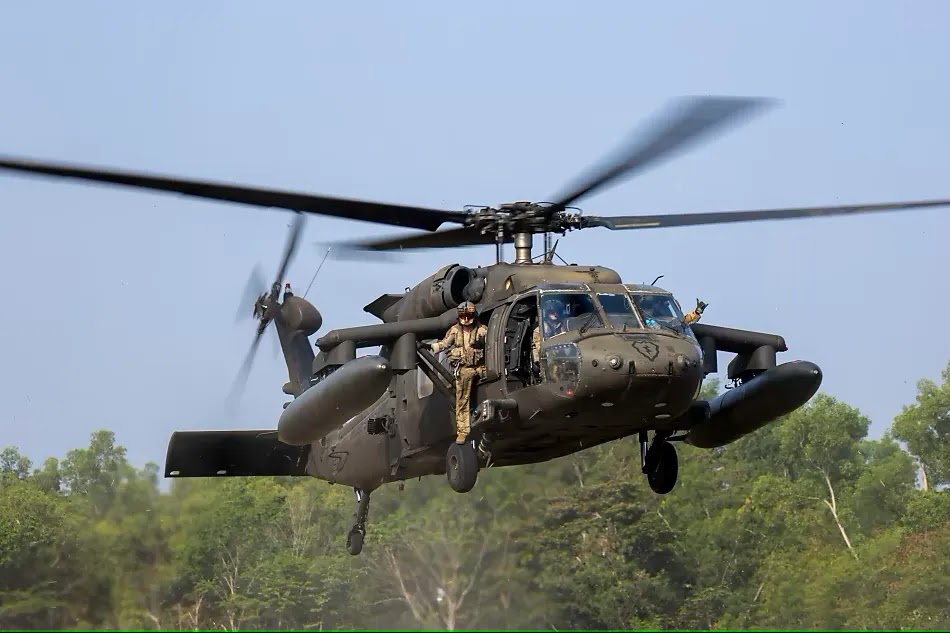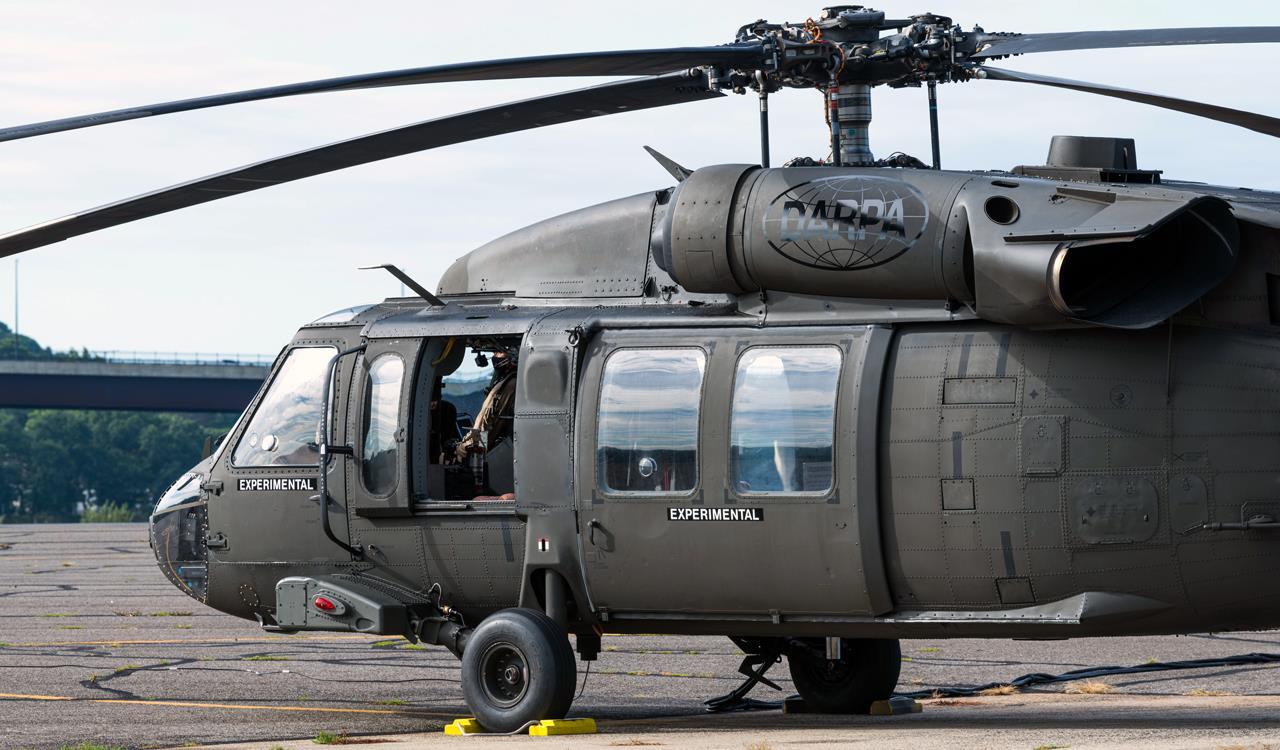Everything You Need to Know About the UH 60 Helicopter and Its Capabilities
Everything You Need to Know About the UH 60 Helicopter and Its Capabilities
Blog Article
Every Little Thing You Need to Learn About the UH 60 Helicopter
The UH-60 helicopter, a foundation of united state Army air travel because its debut in 1979, stands for an amazing blend of design and operational flexibility. Recognized for its extraordinary speed and array, the UH-60 has been adapted for numerous objectives, from army transportation to medical discharge. As army demands develop, so too does the helicopter, with recurring advancements targeted at improving its capabilities and incorporating contemporary innovations. To completely appreciate the significance of the UH-60 in contemporary military operations, one have to consider its background, style, and the future innovations that might redefine its duty.
Background of the UH-60
Developed in the late 1970s, the UH-60 Black Hawk helicopter became a feedback to the united state Military's need for a flexible energy helicopter that can carry out a range of objectives under difficult problems. The inspiration for its style was the imperfections recognized in the earlier helicopters used throughout the Vietnam War, particularly in terms of maneuverability, survivability, and speed.
The Black Hawk was designed by Sikorsky Aircraft, incorporating innovative technologies and materials to enhance its efficiency and resilience. It was officially introduced into service in 1979, rapidly ending up being an essential possession for military procedures - uh 60. Its capability to transport troops, clinical evacuation, and logistical assistance in both combat and humanitarian goals made the Black Hawk a very useful component of the united state Military's air travel fleet
Throughout the decades, the UH-60 has actually been continually updated, adjusting to the altering nature of war and the advancing requirements of modern military procedures. Its operational background consists of participation in significant disputes, peacekeeping objectives, and calamity alleviation initiatives, solidifying its track record as a trusted and effective helicopter in numerous settings worldwide.

Style and Specifications
The layout of the UH-60 Black Hawk helicopter continually shows a commitment to operational performance and flexibility. Created by Sikorsky Aircraft, this medium-lift utility helicopter features a streamlined, aerodynamic body that improves rate and ability to move. Its tandem blades system, defined by two counter-rotating blades, lessens resonance and enhances lift capability, permitting safer procedures in varied environments.
The UH-60 is powered by two T700-GE-701C turboshaft engines, supplying a maximum speed of around 180 knots and a range of around 400 nautical miles. Its robust airframe is built from advanced composite materials, ensuring toughness while keeping a relatively low weight. The helicopter has an optimum gross weight of concerning 22,000 extra pounds, sustaining a flexible haul arrangement.

Goals and roles
A flexible system, the UH-60 Black Hawk helicopter offers a wide range of roles and objectives within military procedures. Created primarily for troop transport, it can bring approximately 11 soldiers, making it an important property for quick release and see this site logistical support.
In enhancement to troop transport, the UH-60 succeeds in medical evacuation (MEDEVAC) goals, geared up with sophisticated clinical devices to give vital treatment during transit. Its ability to run in varied environments enhances its efficiency in battle search and rescue (CSAR) procedures, where speedy extraction of personnel is important.
The helicopter additionally plays a substantial role in reconnaissance and surveillance goals, making use of onboard sensors and devices to debrief. Furthermore, its convenience encompasses logistical assistance, with the ability of moving supplies and tools to ahead running bases - uh 60.
In combat operations, the UH-60 can be outfitted with various tool systems, enabling it to offer close air support. Its multi-role capability makes the Black Hawk a vital tool for contemporary military forces, adjusting flawlessly to the evolving demands of combat zone circumstances and making certain objective success across a variety of operational contexts.
Efficiency and Abilities
Recognized for its robust efficiency, the UH-60 Black Hawk helicopter flaunts excellent abilities that enhance its functional efficiency throughout numerous objectives. uh 60. This multi-role aircraft is outfitted with powerful twin-engine Turbomeca Arriel 1D1 engines, supplying phenomenal rate and maneuverability, with an optimum cruise speed of about 150 knots and an operational array of around 400 nautical miles
The Black Hawk's advanced avionics and fly-by-wire control systems substantially improve trip security and handling, permitting it to run in varied atmospheres, including adverse weather. Its flexibility is further exhibited by its capacity to bring approximately 11 completely equipped troops or a haul of roughly 8,000 pounds, making it excellent for troop transportation, medical discharge, and logistical support missions.
Furthermore, the UH-60 is made for survivability, including enhanced airframes, ballistic protection for team and guests, and advanced countermeasure systems to avert threats. The helicopter's agility and rate, combined with its ability for quick deployment, make it a crucial asset in modern-day army operations, making sure that it continues to be a crucial element of tactical air assistance and combat zone movement.
Future Advancement

One considerable emphasis is the assimilation of sophisticated avionics systems, which will boost situational awareness Discover More Here through boosted navigation and interaction capabilities. This includes the prospective use fabricated intelligence to aid pilots in decision-making and goal planning.
In addition, future variants might incorporate innovative materials and style features to boost the helicopter's durability and minimize its radar trademark, enhancing Full Report survivability in opposed environments.
The intro of hybrid-electric propulsion systems is also imminent, intending to boost fuel performance and reduce logistical problems. Such advancements could expand functional range and minimize the helicopter's ecological footprint.

Conclusion
The UH-60 helicopter stands for a significant development in army aviation since its intro in 1979. Its robust layout, flexible capacities, and constant upgrades guarantee its relevance in different operational roles, consisting of army transportation and medical evacuation. As technology advances, future advancements will likely enhance its efficiency through the combination of fabricated knowledge and hybrid-electric systems. The UH-60's sustaining visibility emphasizes its important duty in modern armed forces operations and highlights the ongoing evolution of army air travel innovation.
The UH-60 helicopter, a keystone of U.S. Army air travel because its launching in 1979, represents a remarkable mix of engineering and functional flexibility. As military demands develop, so also does the helicopter, with recurring improvements intended at improving its abilities and integrating modern technologies.The style of the UH-60 Black Hawk helicopter continually mirrors a commitment to functional effectiveness and versatility. Created by Sikorsky Aircraft, this medium-lift energy helicopter includes a smooth, aerodynamic body that enhances speed and maneuverability.The UH-60 helicopter stands for a substantial innovation in army aviation since its intro in 1979.
Report this page